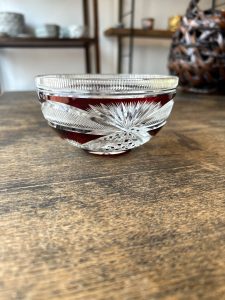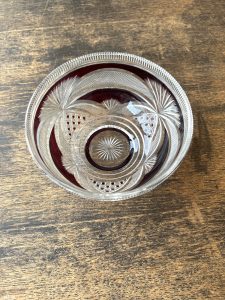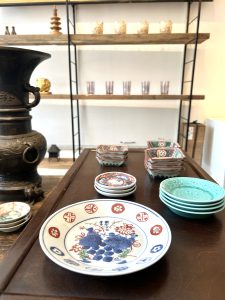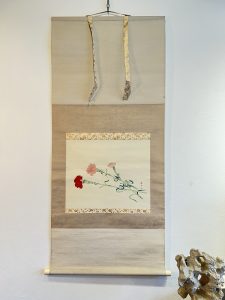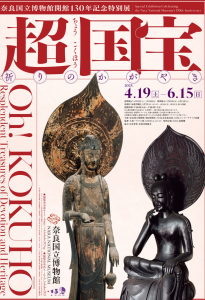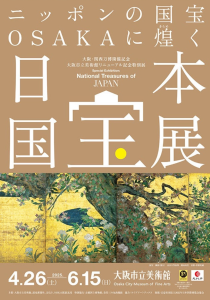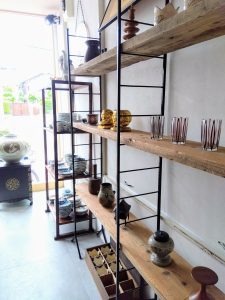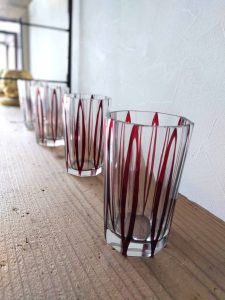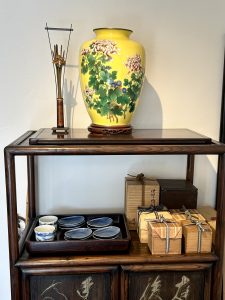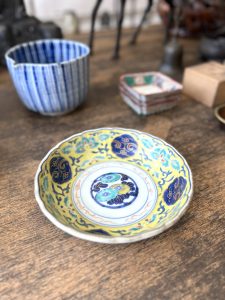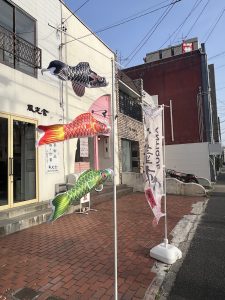絶賛お悩み中です(愛知県名古屋市千種区姫池通 骨董買取 古美術風光舎)
2025.05.15
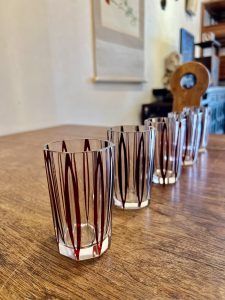
爽やかなお天気ですね。先日から我が家のほったらかしのつるバラが、勝手に大きくなって予想外に花を咲かせておりまして、今後どうやって維持管理していこうか…、鮮やかな花を眺めながら、ちょっと悩ましく今朝も出勤してまいりました。
さてさて、本日は国宝展の続報であります。本日は京都国立博物館で開催中の大阪・関西万博開催記念・特別展「日本・美のるつぼ」についてつぶやいていきますのでお付き合いくださいませ。

こちらの特別展は「世界に見られた日本美術、世界に見せたかった日本美術、世界と混じり合った日本の美術」という視点から、弥生・古墳時代から明治期までの絵画、彫刻、書跡、工芸品など、国宝18件、重要文化財53件を含む約200件の文化財を厳選して日本美術に秘められた異文化交流の軌跡を辿っていく展覧会のようでして、かつての万国博覧会と関連のある展示物が多いようであります。
日本が最初に万博にブースを設けた1862年の第2回ロンドン万博。以降、第2回パリ万博(1867)、ウィーン万博(1873)に参加し、世界に展示、紹介されたに日本美術の展示された美術品や工芸品として、主な展示としては葛飾北斎の《富嶽三十六景》(1831頃)、鈴木長吉《銅鷲置物》(1892)日本最大の銅鐸で重文の《突線鈕五式銅鐸》(弥生時代)や法隆寺献納宝物である《菩薩半跏像》(飛鳥時代)など数多くの貴重な展示物が出展されているようですね。
そんな中、個人的に興味が湧いたのが史上初めて日本美術を体系的に論じたとされる『L’Art Japonaise』(1883)、また1900年のパリ万博の展示品として、日本人が初めて編んだ西洋式の日本美術史書『Histoire de l’ Art du Japon』などの書籍なのですが。
どちらも西洋に向けて日本の美術や美術歴史を論じた書籍でして、日本美術史書『Histoire de l’ Art du Japon』は、体系的な美術史が国威発揚になると考えた明治政府が1000冊製作したもののようでして、各国首脳や海外美術館などに配った書物のようです。時代や分野の区分は企画当初の編集長は、あの岡倉天心の構想に基づいているようでして、現在では国宝や重要文化財となった名品が収録されており、日本美術史の基礎となった1冊。これまで西洋で目に触れることのなかった日本の美術や美術の歴史がどのように紹介されているようですね。
『L’Art Japonaise』や日本美術史書『Histoire de l’ Art du Japon』ではないですが、我々には当然のように触れてきた美術品や文化などですが、かつての万博で世界に紹介された日本文化や美術品をみて当時の世界の人々の目にはどのように映ったのでしょうね。また、どう感じたのか、ついついいつもそんなニューマンストーリーが気になるところですが、当時の万博の様子に触れながら、時代や世界を飛び越えた人の目に映ったJaponが見えてきそうな展覧会、このチャンスを逃してはならないぞ…。
などと思うのですが、連日の京都の観光地の映像を眺めながら、参戦するかどうか只今絶賛悩み中ではあります。
それではごきげんよう。(スタッフY)
大阪・関西万博開催記念 特別展
日本、美のるつぼ―異文化交流の軌跡―
会期:2025年4月19日~6月15日
会場:京都国立博物館 平成知新館
住所:京都府京都市東山区茶屋町527
It is a refreshing weather, isn’t it? The vine roses that have been left alone in our house since the other day have grown up on their own and are blooming unexpectedly, and I am wondering how I should maintain them from now on… I went to work this morning, looking at the vivid flowers, a little worried.
Today, I would like to report on the National Treasure Exhibition. Today, I will be tweeting about the special exhibition “A Crucible of Japanese Beauty,” commemorating the Osaka-Kansai World Exposition currently being held at the Kyoto National Museum, so please bear with me.
This special exhibition, from the viewpoint of “Japanese art seen by the world, Japanese art wanted to be shown to the world, and Japanese art mixed with the world,” carefully selects about 200 cultural properties, including 18 national treasures and 53 important cultural properties, such as paintings, sculptures, calligraphy, and crafts from the Yayoi and Kofun periods to the Meiji period, to trace the path of cultural exchange hidden in Japanese art. Many of the exhibits seem to be related to the World Expositions of the past.
The first time Japan set up a booth at a World Expo was in 1862 at the 2nd London Expo. The main exhibits include Hokusai Katsushika’s “Fugaku Sanjurokkei” (36 Views of Mt. Fuji, ca. 1831), Chokichi Suzuki’s “Dotsuwa Okutsu” (1892), Japan’s largest bronze bell, a heavy artifact, and “Dotaku Dotaku,” a five-stroke knob bronze bell (Yayoi period), a heavy artifact. I understand that many valuable exhibits are on display, including a “Dotaku” (bronze bell) (Yayoi period) and a “Bodhisattva half-lotus” (Asuka period), a treasure donated by Horyuji Temple.
Among these, I was personally interested in books such as “L’Art Japonaise” (1883), which is said to be the first book to systematically discuss Japanese art, and “Histoire de l’ Art du Japon,” the first Western-style history of Japanese art compiled by a Japanese as an exhibit at the Paris Expo in 1900. Both of these books are intended to provide a history of Japanese art and art history to the West.
Both books discuss Japanese art and art history for the West. The “Histoire de l’ Art du Japon” was produced in 1,000 volumes by the Meiji government, which believed that a systematic art history would promote national prestige, and was distributed to heads of state and foreign museums. The division of periods and fields seems to have been based on the conception of Tenshin Okakura, who was the editor-in-chief when the book was first planned. The book contains masterpieces that have now become national treasures and important cultural properties, and is one of the foundations of Japanese art history. It seems to introduce how the history of Japanese art and art that has never been seen in the West before.
It is not “L’Art Japonaise” or “Histoire de l’ Art du Japon,” but we have been exposed to art and culture as a matter of course, and I wonder how the people of the world at that time saw Japanese culture and art works introduced to the world at the former World Expo. I wonder how the people of the world at that time saw the Japanese culture and artworks introduced to the world at the former Expo ’70 and how they felt about them. I also wonder how they felt about it.
This is an exhibition that will give you a glimpse of Japon in the eyes of people from all over the world and from different eras, while touching on the state of the Expo at that time. I think I must not miss this chance…but as I watch the images of sightseeing spots in Kyoto day after day, I am wondering whether or not I should participate in the exhibition.
Have a good day. (Staff Y)
Special Exhibition in Commemoration of Expo ’70 Osaka-Kansai
Japan, a melting pot of beauty – Trajectory of cross-cultural exchange
Dates: April 19 – June 15, 2025
Venue: Heisei Chishinkan, Kyoto National Museum
Address: 527 Chayamachi, Higashiyama-ku, Kyoto-shi, Kyoto
*****************
ご実家の整理やお片付けなどをされている方のご相談などが多くございます。
お片付けなどくれぐれもご無理のないようになさってくださいませ。
風光舎では古美術品や骨董品の他にも絵画や宝石、趣味のお品など様々なジャンルのものを買受しております。
お片付けをされていて、こういうものでもいいのかしらと迷われているものでも、どうぞお気軽にご相談下さいませ。
また風光舎は、出張買取も強化しております。ご近所はもちろん、愛知県内、岐阜県、三重県その他の県へも出張いたします。
まずは、お電話お待ちしております。
なお、毎月21日の持込鑑定会では無料鑑定・買取・持込など、ご予約なしで承っております。
ご近所の皆さま、ご遠方のみなさまも、お気軽にお越しくださいませ。
愛知県名古屋市千種区姫池通
骨董 買取【古美術 風光舎 名古屋店】
TEL052(734)8444
10:00-18:00 OPEN
#出張買取#骨董#古美術#骨董品#絵画#版画#茶道具#刀剣#彫刻

